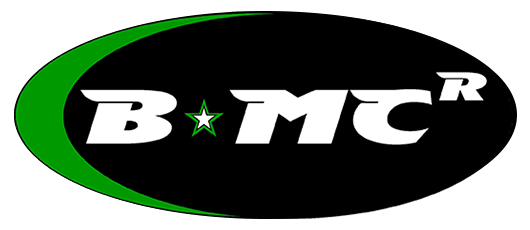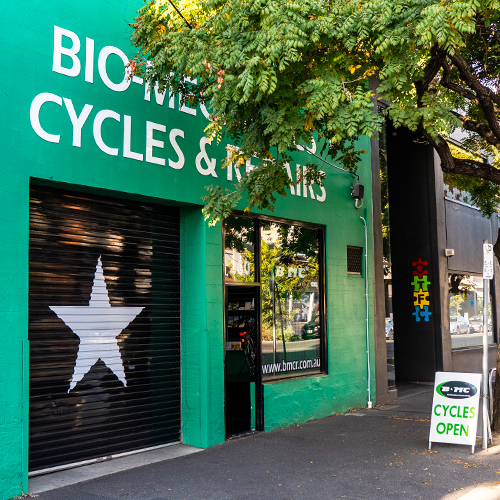How to get home with a broken chain


The easiest way to fix a broken bike chain
What a beautiful day for a ride! The birds are chirping, the sun’s shining, and you’ve even got a tailwind. Nothing can spoil this, you think, happily cycling along…until suddenly you’re pedalling but going nowhere.
Yup, you’ve got a broken chain.
The only good thing about breaking a bike chain is that you immediately know when it happens. (Unlike, say, a shredded bearing or cracked seat tube, which some people can ride around on for days/weeks/months without noticing.)
But don’t despair – a snapped chain doesn’t have to derail (#bikejoke) the rest of your ride. You can fix it yourself, and all you need is a joiner link and a chain-breaker.
We’re going to show you the quickest and easiest way to repair your chain and get riding again.

Bicycle chains explained
Before we get started, here’s a quick chain anatomy lesson so you know exactly which bits we’ll be talking about.
- Outer plates: the outside of the chain link
- Inner plates: the inside of the chain link
- Rollers: these spin to allow the chain to roll over the teeth of the cassette/rear cogs and chain rings
- Pins: these hold the plates and rollers together. Also called rivets.
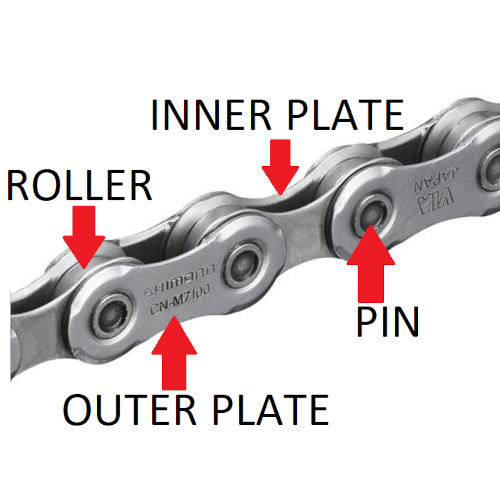
What tools do I need to fix a bike chain?
There are only two things you need to fix a broken bike chain when you’re out on the trail or by the side of the road:
- A good-quality chain-breaker tool
- A joiner link.
Don’t waste your money on a cheap chain-breaker. Modern chains are strong, and will often destroy a low-quality tool—and vice versa, unfortunately—so it’s worth investing in a decent one.
Something like the BBB Nautilus II is a good option – it’s not expensive and it’s light enough to stow away in your saddle bag.
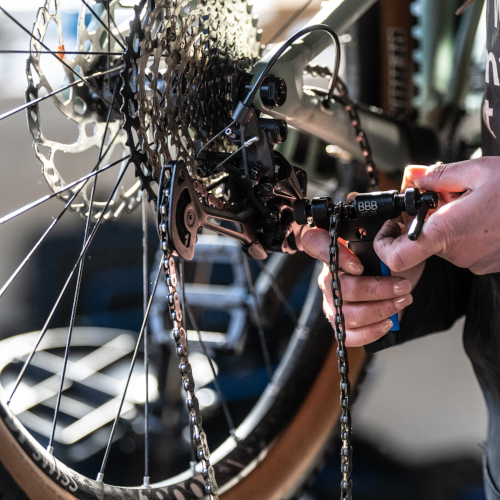
The joiner links you use must match the chain you’re running. There’s no point trying to fit a Campag 13-speed link to a Shimano 11-speed chain. There are many different brands of joiner link, so make sure the ones you’re carrying are compatible with your bike’s drivetrain.
Workshop tip: Although Shimano, SRAM and Campag all say that you should only ever use the joining system approved by the manufacturer, there are some cross-compatibilities. As long as the width of the inner plates matches the inside dimensions of the joiner link, you’re good to go.
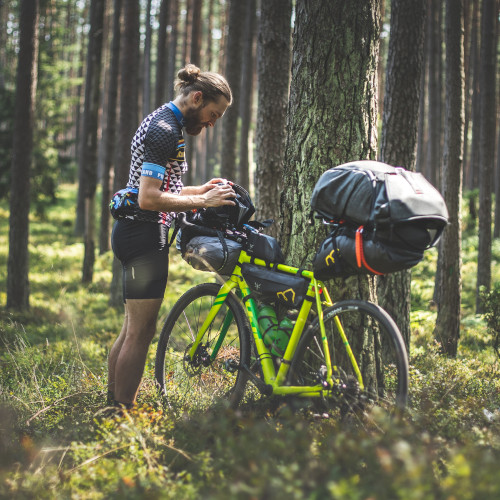
Wait – what about chain joining pins?
Joining pins are another method for connecting your chain, but for trail-side repairs—especially if you’re not extremely experienced—they can be fiddly.
As with all repairs in the wild, we want to keep it as simple and easy as possible, so today we're focusing on joiner links instead.
Side note: outside a workshop environment, we generally don't recommend trying to use Shimano or Campagnolo joining pins. Genuine pins from these companies require a very high-quality chain tool, plus experience to fit them properly. They can actually damage the chain's outer plates if fitted incorrectly—which just leads to another broken chain, hurray—or snap while being installed, which leaves you stuck with a non-functioning drivetrain.
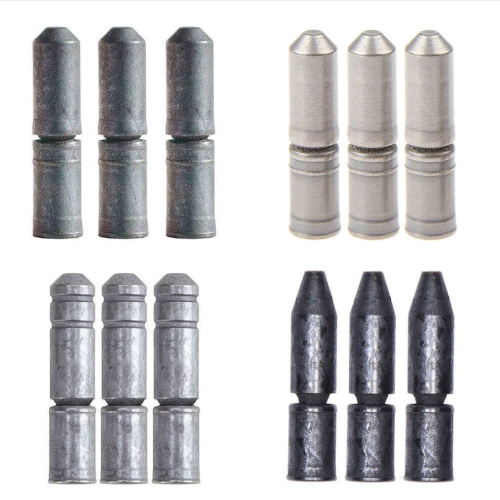
Back to the broken chain. First up, we need to do some diagnosis.
Why did your chain break?
There’s not much point trying to fix anything until we find out why your chain actually broke. (Don’t worry; it won’t take long.)
Did a stick get jammed in the rear derailleur?
If so, check out the derailleur and hanger before you do anything else. If one or both are bent, try to bend them straight. (It probably won’t be perfect; there’s only so much panel-beating you can do with your hands.)
If either component is very badly bent or broken, put your chain breaker away and get out your phone instead, because you’ll need to a) organise a pick-up and b) ring your bike shop to book in your broken bike.
(Can’t get a ride? Too far to walk? You may need to single-speed it to get home; we’ll show you how to do this a bit later.)

Did your derailleur go into your spokes?
If your chain broke because the derailleur got jammed into the rear spokes, check out your rear wheel.
If it’s buckled, you’ll want to straighten it as best you can before going any further with chain repairs. Here’s how to do this.
Was the chain just not joined properly?
If you were pushing hard on the pedals when your chain broke, the break was most likely caused by one of three things:
- The chain was already damaged from a previous incident.
- The chain was worn.
- The chain wasn’t joined properly.
You may not realise that your chain has been damaged, but a worn chain will usually give you some warning through skipping under load. (Yet another reason to get your bike serviced regularly.)
Chains that aren’t joined properly usually come down to installation, rather than manufacturing. The main error is incorrectly installed pins. (As we mentioned earlier, they can be a pain to get right.)
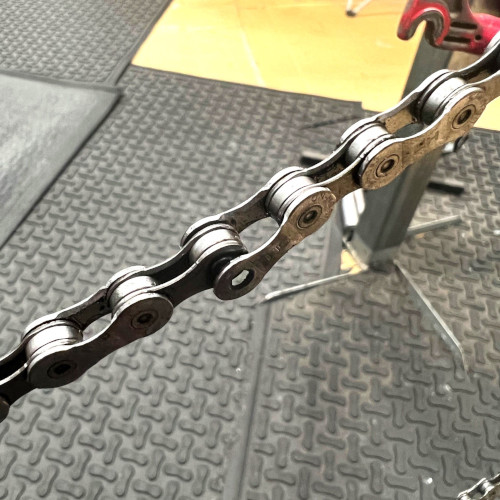
The other most common fault is because many people don’t realise that joiner links and some chains are directional. We’ve seen countless bikes come into the workshop where the owner has accidentally put the chain or joiner link on backwards.
(Hey, no judgement here – at least the owner is trying to look after their bike by changing the chain.)

Which way does a bicycle chain joiner link go?
See the arrow on the joiner in the picture below? It’s supposed to run in the same direction that the chain runs.
When replacing a joiner link, you're usually working with the broken part of the chain at the bottom, as in between the cranks and the rear derailleur. If this is the case, when you install a link (assuming you’re using Sram, Shimano, etc.), the arrow should be pointing towards the cassette, not the chain rings.
Remember: the arrow points the way the chain will be going.
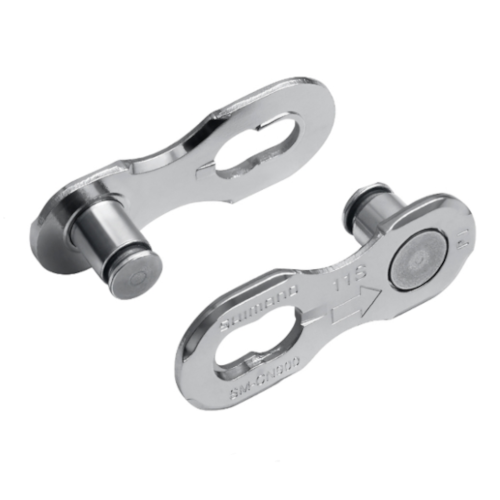
Caution: if you’re using a Wippermann Connex joiner, it runs the other way around.
A Wippermann chain link installed (when positioned at the top, as in between the cassette and chain rings) will look like this:
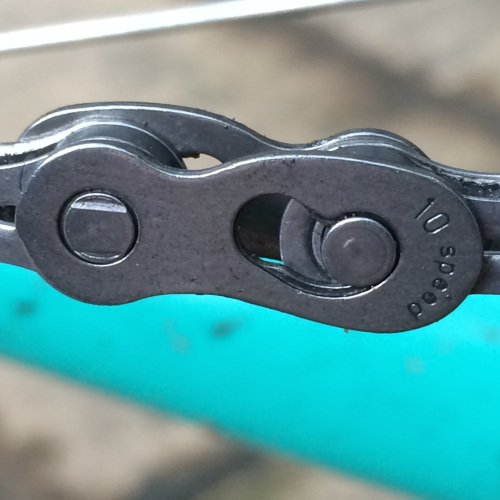
Which way does a bicycle chain go?
Some Shimano chains are directional. You'll know you have a directional Shimano chain if it has logos on one side but not the other. When installing it, make sure the logos are on the outside of the chain, not facing inside towards the spokes.
While SRAM chains are technically not directional, their flat-top 12sp chains need to be installed so the flat part is—you guessed it—running along the top. (It’s more of a up/down directional point, rather than fore/aft.)
Campag and KMC chains are not directional, though some of KMC’s single-speed ones are flat-tops as well so the same advice for the SRAM flatties applies.

How do I fix a broken bike chain?
Don’t begin by turning your bike upside down. While it’s useful to have it this way to work on certain things (trueing wheels, changing flats), for a broken chain fix, you’ll want to keep it right-side up.
Just find a fence/tree/spot to lean it on while you work.
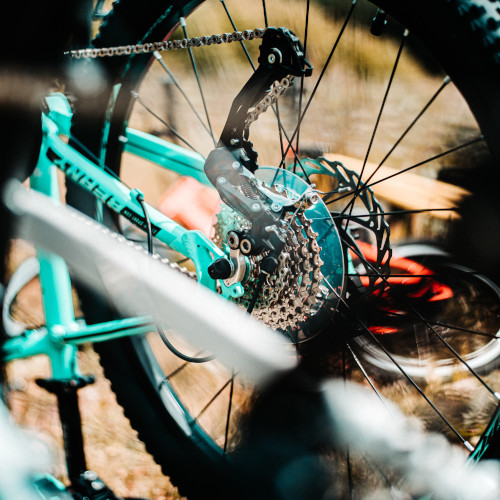
OK, let’s fix that chain!
First, you’ll need to remove the damaged link(s) by pushing the pins out.
Keep in mind that the joiner link replaces the outer plates (think back to the chain anatomy diagram), so if you’ve got damaged inner plates, you’ll need to cut out three links, not one.
Get your chain-breaker tool and position the chain so the pin of the damaged link is in the slot. Now wind the tool handle, which will press the pin out of the link. Repeat to remove the second pin.
Now, separate the joiner, fit one plate to each end of the chain and click them together. Remember to check that the arrow is pointing in the correct direction. If it’s fitted backwards, it may pop open under load or while changing gears, and you’ll end up with another broken chain. (And possibly a top tube to the groin, always a fun time.)
Most joiner links need a level of force to lock them together. After you've joined the chain at the bottom, rotate the cranks backwards until the link is between the cassette (rear cogs) and cranks, as illustrated below. Now apply hard pressure to the pedals until the two halves of the link snap into place.
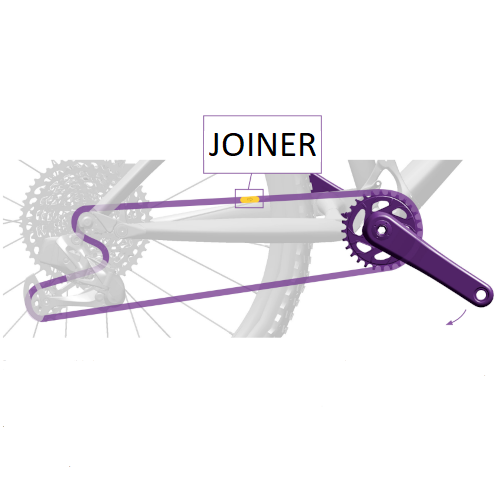
Beware of the shortened chain
If you’ve had to remove several links instead of just one, your chain is now technically shorter. (It sounds obvious, but not everyone remembers this bit.)
With a shorter chain, you’ll have to avoid any gear combinations that will over-stretch the derailleur cage, such as being in the big chain ring and the lowest gear (the one closest to the spokes).
If you ignore this and just keep using the gears as you did before, you risk completely ripping off your rear derailleur. So if you’ve removed several links, don’t start smashing through the gear shifts on the way home, even if you’re eager to get back.
An easy way to avoid this issue is to carry a few spare links of the same chain that’s on your bike, as well as two joiners. This means you can replace whole sections of chain without losing any overall chain length (or risking a rapid unscheduled disassembly).

How to get home without being able to change gears
If your rear derailleur and/or hanger are toast, don’t despair! All you need to do is bypass the derailleur altogether.
Set the chain up so it’s on the inner/smaller chain ring if you’re running a 2X system or the middle chain ring if you’re running a 3X system. (If you’re running a 1X system, well, you can probably work out which chain ring you're putting it on.)

On the rear, select a middle cassette cog which will allow you to achieve decent chain tension. You’ll need to shorten the chain considerably to do this. (Fortunately you've just read an informative post on exactly how to do this.)
Now use your joiner link to connect everything together.
If you’re on a dual-suspension bike, you’ll also need to either lock out the rear shock or preload the shock as much as possible, leave a little slack in the chain (but not too much) and pedal gently for the return trip.
Ta-da! You’re now going to discover the joy of single-speed riding. And you've just saved yourself paying for a ride home.
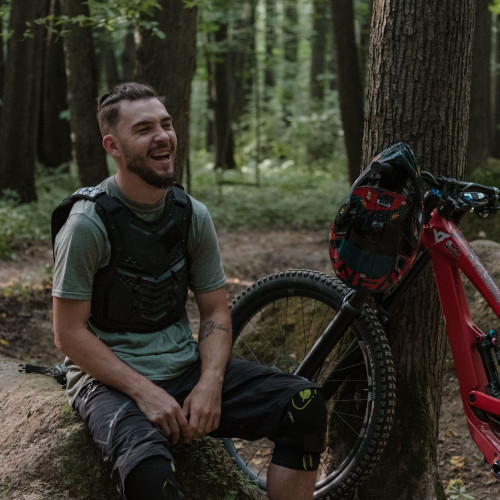
In conclusion
A broken chain doesn’t mark the end of your ride. With two simple tools and a bit of knowhow, you’ll be able to get moving again.
As with all unscheduled repairs, the ride back to your car/house isn’t the time to start trying to crush your PBs or hit a Strava record. Take it easy, be kind to the bike, and bask in the knowledge that you now have another bike-related skill under your belt.
Plus you now know about directional chain links, which is more than most people.
Once you’re home, drop us a line so we can check your bike out to make sure you’re ready for your next adventure or training session.
